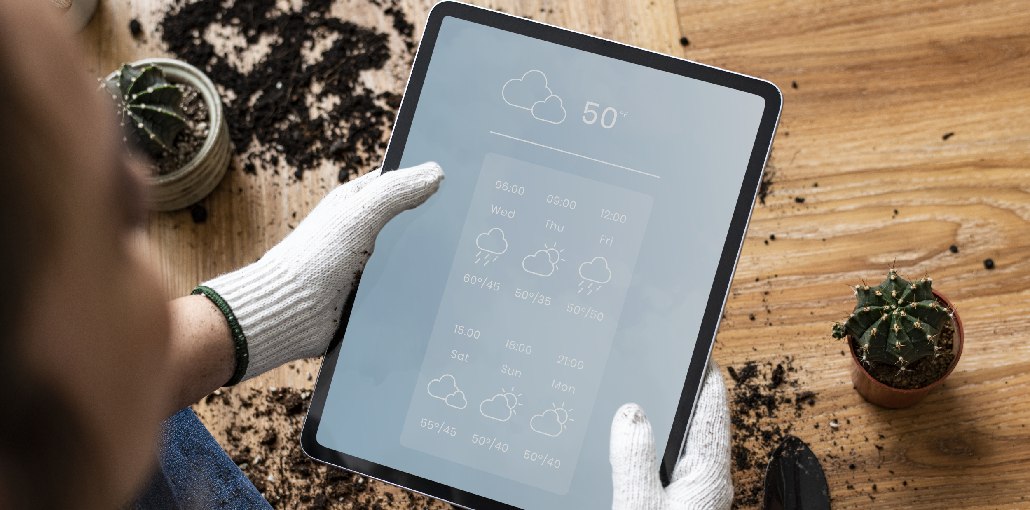In the past few decades, weather forecasting technology has advanced from strength to strength. No longer are you required to wait for local news channels to provide the weather forecasts for the next day. You don’t have to call the newspaper to get the latest weather information throughout the day.
Instead, you have access to a wide range of useful weather data at your fingertips. You can access the weather data via your smartphone or computer as long as you are connected to the internet. These data-driven forecasts are often surprisingly accurate.
What’s the secret to this remarkable transformation in weather technology?
It involves a variety of tech innovations that include artificial intelligence and machine learning, the internet of things (IoT), and wireless communication networks. Data analytics is the one technology that has changed weather forecasting.
This blog will explore the impact of data analytics in weather forecasting. We’ll also examine whether the hype is worth it. Let’s start by understanding how these new-age weather intelligence platforms operate.
Weather Forecasting in 2021: A Closer Look
Strong application programming interfaces (APIs) are used to build modern weather forecasting websites and apps. It doesn’t matter if you are using a specific app for your industry, or a general weather app, an API is used to access weather data.
Tomorrow’s Weather API, for instance, retrieves vital weather data such as temperature, precipitation, and air quality index from a variety of sources. It also extracts historical weather data, from many databases.
All Tomorrow’s weather API apps have access to this data in real-time. Users have access to the most accurate and up-to-date weather information.
Access to weather information is not enough. It is still necessary to have a way to process the vast amounts of data collected from different sources such as radar stations and satellites.
Data analytics is here to help. Let’s see how data analytics improves weather forecasting accuracy and efficiency.
Also read: Data Analytics In Digital Transformation: Driving The Change For Organizations
Big Data Analytics & Weather Forecasting: Understanding the Connection
Big data analytics is a collection of technologies that can be used to extract actionable insights from large amounts of data. This is especially useful for weather forecasting, which involves large volumes of data and too many variables.
Weather forecasting platforms used to rely on the intuition and expertise of meteorologists to make predictions about future weather. This process was slow and inefficient, which is not surprising. It was also vulnerable to human error and could not generate accurate forecasts for specific locations.
Data analytics employs AI and ML to automate collecting and evaluating weather data in order to extract useful insights. It is faster and more precise. It eliminates human error and allows weather intelligence platforms to generate more precise forecasts.
Hyperlocal Weather Forecasts Made Easy
This means that you can now find out the weather conditions at specific locations such as homes, airports, and farms. It has also accelerated the growth of hyperlocal weather forecasting when combined with IoT. Hadoop is also a great help in weather forecasting.
The hyperlocal weather intelligence platforms collect weather data from various sources on the ground, including smartphones, smart bins, and connected cars. These devices are used to analyze the data and predict weather conditions at a specific location.
Hyperlocal forecasts are useful for a wide range of industries including agriculture, healthcare, aviation, facility management, and event planning.
Real-Time Weather Insights
Data analytics removes the need for meteorologists to make inference-based forecasts. It uses AI-powered algorithms instead to process weather data, and generate real-time forecasts.
Businesses can gain valuable insight into the weather for the coming hour, day, or week. This information can be used to optimize staffing and resource allocation as well as ensure business continuity in the event of inclement weather. It also helps to ensure safety for employees and workers.
Meteorologists can also use data analytics to monitor and predict extreme weather events such as storms and cyclones. They can accurately predict where and when a storm is likely to make landfall. This is a significant breakthrough in disaster management and recovery.
Also read: Everything You Need To Know About IoT in 2021 and Beyond
Expand the potential of data analytics for weather forecasting
Modern businesses need accurate, timely, and precise weather data to survive. A robust, feature-packed API is available to help you build a weather intelligence platform that meets your specific needs. Automated processing and big data analytics can be used to generate precise, hyperlocal forecasts.










Leave a comment